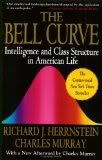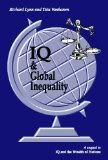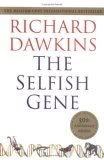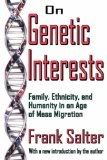"There can be no bystanders in the battle for survival. Anyone who will not fight by your side is an enemy you must crush."
- Scriptoris Munificantus.
If there’s one thing that pisses on my battery, it’s this spineless, flop-wristed notion that no objective truth exists, only opinion. Snivelry! I consider such postmodern relativism to be sheer intellectual cowardice, and a symptom of the egalitarian pathology. Not only are we to accept all men as equal, but also their relative levels of understanding? Sewerage!
Liberal individualism propounds that every human conciousness is a precious snowflake, and to impose thereupon a meta-conciousness, say God, morality or Fatherland, is oppressive. Thus, we have no acceptable criteria by which to judge humanity, apart from their acceptance of... What is itself is a meta-narrative. A brutally oppressive one at that as, in the name of human freedom, it stamps on the face of human nature. There is to be no tolerance for European solidarity, no right granted them to live as their ancestors. Where in this tyrannical hypocrisy is all its vaunted freedom, the individual liberation it claims? Its freedom is slavery, for freedom without love for others is but self-indulgent degeneracy... But we’ll get to love, and others, later. For now, the tirade continues.
 Just as moral relativism seeks to corrupt justice by replacing good and evil with cause and effect,
Just as moral relativism seeks to corrupt justice by replacing good and evil with cause and effect, That one approach should be based on logical reasoning and the other superstition and mimicry is irrelevant; we’re to accept all viewpoints as comparatively valid. That one such “viewpoint” can put men on the moon whereas the other can’t explain gravity is - what? Perhaps a quirk of fate that such ideas landed where they did when culture first fell from the sky... Here’s a reality check for blind adherents of cultural relativism and egalitarians alike: we can judge a culture by its effects and a people by the culture they create.
Of course, such logic is unlikely to sway those whose thinking eschews the modelling of reality for the protection of vested interest. To that end, they wage war on truth, be it scientific, historic or journalistic. Such truths become merest opinion, to be dismissed as easily. If natural law is infinitely malleable and events endlessly interpretive, if no fixed reality exists, then nothing can be empirically proven or refuted. Even the most blatantly false and destructive ideologies are safe in such an environment, for as long as they retain popular support.
Barring great upheaval, we can expect the persistence of such support into the foreseeable future. Setting aside the declared allegiances of the body politic, the sensory organs of media are teeming with ideological infestation, to say nothing of the malignancy riddling the learning centres. Hence the farcical situation whereby politically-motivated laymen sit in judgement on the great minds of our age. These shapers of idiot opinion are given a veneer of authority by their sheer ubiquity. Feel-good appeals to equality and progress, those perennial buzzwords of Communism, are repeated unceasingly to condition the productive to their cannibalisation by the useless.
The cycle is perpetuated as each new generation is indoctrinated into the civic religion of soft, sanitised thought. A liberal arts degree might propel a career in media or education with the requisite degree of topspin, but it provides little in the way of real-world knowledge. How ironic when such types accuse the informed truth-seekers of ignorant bias. And how desperate the accusations when emotional outrage must serve as substantiation!
Adherents of “dangerous” truths too apparent or well-established to be refuted by shallow sophistry and philosophical razzle-dazzle, soon find themselves subject to vicious ad hominem attacks. Their words are labelled with the relevant ‘ism, be it racism, sexism or, my personal favourite, scientism. Espousing a provable position is apparently the latest discrimination, and those who put forward such positions are demonised as claiming meaning can only be derived from science. As science claims no such thing, the term itself is laughably self-defeating.
Ultimately, Western rational thought, with its implicit assertion of the superiority of right over wrong and the desirability of advancement, is offensive to the politically correct incorrect. Quickly, a moratorium on critical thought lest feelings, those all-important guiding principles, be hurt...
 Sensing the weakness of their position, knowing they cannot defend the egalitarian fiction in a fair public debate, our opponents devote themselves to cultural hegemony. Gramsci’s long march through the institutions has brought us here, to the precipice of racial extinction. It is our duty to dig in our heels, shout the demographic cliff and push back with all our power against the driving force.
Sensing the weakness of their position, knowing they cannot defend the egalitarian fiction in a fair public debate, our opponents devote themselves to cultural hegemony. Gramsci’s long march through the institutions has brought us here, to the precipice of racial extinction. It is our duty to dig in our heels, shout the demographic cliff and push back with all our power against the driving force.If that means institutions, society itself, must be smashed to prevent our soft genocide, then so be it. We who have no future left to lose might laugh as we open the very gates of Hell.
Having temporarily soothed my savage breast of its rage at the insidious campaign against reality and logic, let me turn to a more specific source of irritation: over 50% of Americans dispute the theory of evolution. Whatever their motivation for doing so, be it religious, political or simple mortification over their mammalian mortality, the figure suggests no amount of logical argument or real-world evidence can displace the irrationality of a large majority of our population. This presents a bleak prospect to those of us who would purge egalitarianism from the collective mindset. Or does it? To reframe religion within the scientific context, it has existed since the dawn of man and so might hold significant survival value. We can take heart in the fact that egalitarianism is an extremely recent experiment in social organisation, a shallow concept of only dubious survival value both as a meme and for those who entertain it.
Let’s tour the evolutionary psychology of religion, before taking the scenic route back to political thought via way of human evolution.
Upon closer examination, the psychological core of religious belief is revealed to be deeply rooted in human neurology. While I mentioned its survival value, I doubt the existence of genes for religion per se. Far more likely, faith in the supernatural arises from the interplay of the following adaptive cognitive processes:
1) Agent detection, which evolved primarily for self-preservation. If you’ve ever been menaced by a half-glimpsed shadow or green mamba that turned out to be a hosepipe, you’ll have an intuitive grasp of this faculty. It was selected for because our more paranoid ancestors had a higher survival rate than the laidback ones. Those who reacted to every snapping twig as if broken by a tiger tended to lead longer lives. This faculty led to imaginative power and symbolic understanding.
2) Theory of mind, which is the recognition that others possess a mind alike to one’s own, with comparable motivations and knowledge. Without this feature, we would be incapable of social interaction on all but the most basic level. Of course, recognition of external mentation opens the door to dualism. If we can gauge minds as a separate entities, the frequent conclusion is that minds are separate entities. Hence the belief they survive death in some disembodied, essential form. That contemplating non-existence presents an insoluble paradox to our minds certainly has a finger in this same pie.
Theory of mind develops in late infancy, prior to which we are unaware of the separation between our and other minds. As tiddlers, we swim in a sea of boundless information, and if that harkens back to omniscient deities or collective conciousness we are of one mind.
3) Causal attribution, to which we are particularly prone. Our curiosity demands an explanation for events. This is a “design feature” in the human model simply because learning promotes survival. Events without apparent cause represent a great source of anxiety to the human brain. This uncertainty serves as a negative motivator for the invention of notional best-fits, or what we today call myths and superstitions. Thus, a javelin-throwing god soothed the ancient’s fear of lightning-bolts.
Today we have practical understanding of such natural processes, so deities are usually only invoked to explain the “why” questions. Of course, those whose deities are bound by doctrine to “how” questions, do tend to come into conflict with proponents of practicality. Inevitably, they will use the unanswerable nature of the “why” question to attack the established “how” or, acceptably, to defend their faith.
My personal philosophy is that the existential “why” necessitates detachment from the very process of life from which flows the answer. That is to say: who fucking cares, the show must go on... But I’ll save such profound insights for my acolytes.
4) Pattern-recognition, towards which our brain is primarily geared. Correlating the above modular functions to each other and the cultural environment leads many to religious belief... And of course, I’ve only rimmed the rabbit-hole by stating triggers above conscious awareness. Mental complexity is a multi-dimensional fractal labyrinth.
For the religious: the above is not an arrogant dismissal of religion as a by-product of intellectual evolution. Certainly (he says magnanimously, if rather patronisingly), God could have designed the human mind in precisely such a fashion so as to comprehend His superlative Godliness. I trust we are in agreement that any such design took place through evolutionary processes however? If not, it’s best we part company for what follows is intensely “evolutionist.” I would say, however, that I value religion insofar as it is adaptive to racial survival. Conservative religious morality is excellent for this purpose and, as the Jews will attest, religious faith is excellent for in-group cohesion. It is only the substance of religion I reject, not the form. Specific to Christianity, I repudiate its universalist and masochistic elements.
Time to play God by meddling with the engine of creation. Isn’t braving such mysteries incredibly satisfying? Intellectual pride has ever been our emotional reward for solving problems of survival. In evolutionary terms, promoting survival is the only purpose of emotion. Don’t despair though, ladies, there’s room for romance in such an outlook. After all, romance results in reproductive behaviour and genetic replication - but enough meandering off-topic. I pray at least half of you are familiar with Darwinian natural selection. This is the simple process by which random changes are purposefully selected, either for or against. Slight variations occur which affect the lives of organisms and, provided these changes are heritable, a difference with positive effect becomes the norm. As an illustration, a caveman population varies in intelligence. Dumb ones are inept farmers so they frequently starve, whereas smart ones do better at securing food resources. The really smart ones realise they can withhold the fruit of their labours from the feckless idiocracy and so gain dominion over them, but here I stray from science into politics. To resume, the intelligent have better odds of surviving, of having more children like themselves. Thus, over time the entire population gradually becomes infused with the trait of higher intelligence unless of course they exist in a disgusting, degraded, dysgenic dystopia. But again, let me constrain myself to the immediate point: evolution. This blind, mechanistic process, iterated over countless aeons, is largely responsible for the profuse biodiversity we see around us, if your imagination can but stretch to encompass it.
I pray at least half of you are familiar with Darwinian natural selection. This is the simple process by which random changes are purposefully selected, either for or against. Slight variations occur which affect the lives of organisms and, provided these changes are heritable, a difference with positive effect becomes the norm. As an illustration, a caveman population varies in intelligence. Dumb ones are inept farmers so they frequently starve, whereas smart ones do better at securing food resources. The really smart ones realise they can withhold the fruit of their labours from the feckless idiocracy and so gain dominion over them, but here I stray from science into politics. To resume, the intelligent have better odds of surviving, of having more children like themselves. Thus, over time the entire population gradually becomes infused with the trait of higher intelligence unless of course they exist in a disgusting, degraded, dysgenic dystopia. But again, let me constrain myself to the immediate point: evolution. This blind, mechanistic process, iterated over countless aeons, is largely responsible for the profuse biodiversity we see around us, if your imagination can but stretch to encompass it.
Evolution is an absolutely huge idea, delineating the process by which Life achieves its high purpose of transmitting itself through time. Darwin’s genius was to reveal how, in a very real sense, Life passes as genetic baton from generation to generation in an eternal process of change and rebirth. Life, so fragile yet so tenacious, charts a course so sublime in its subtle harmony that it deserves no lower description than sacred. Though inspiring, it is perhaps more helpful to precise understanding to consider how natural selection applies to us as individuals. It is only through the self that we connect to the greater whole that is Life, and more importantly, it is through the self that Life connects to us. To look within is to note this systematic organisation of adaptations, which sifts organic matter so finely that it can produce such a wonder as a sentient being.
In ourselves, we note the survival instincts, the passion, the identity, all that gives rise to self-awareness and self-respect. I see no shame in proclaiming this love of self. I actively secure my own survival that I may spread my ideas, my passion and yes, my unique genetic identity, through Life. Further, I delight to find this spirit in those I call brothers, for it brings strength and integrity. It is truly the only healthy, natural attitude an individual can take. Those without love for themselves are those who wish no part of Life, but wretched, pitiful suicides. To truly live as men is to be Promethean in the fight for all that we love, to defy all obstacles and by force of will, project ourselves into the world. Finally, through command of the evolutionary programming that defines us as men, we give ourselves the gift of honour.
There is far more to Life however than the self and the challenge of its victorious expression, that we might be rewarded by natural selection. There are finer, nobler even, processes happening within evolution that have direct consequence for racial survival:
 That right there is Hamilton’s Rule. And to my right, is W. D. Hamilton (1936 08 01 - 2000 03 07) himself. Looking like a better choice for Indy’s dad than Sean Connery, Hamilton was not just a jungle explorer, AIDS researcher and iconoclast. He also revolutionised the way we think about Life today, winning ten international awards, by my count, for his contributions to biology. In the words of Richard Dawkins, who conducted Hamilton’s eulogy, “a good candidate for the title of most distinguished Darwinian since Darwin.” We have Hamilton to thank for our best explanation of why sexual reproduction evolved, the less than erotically titillating answer being: parasites.
That right there is Hamilton’s Rule. And to my right, is W. D. Hamilton (1936 08 01 - 2000 03 07) himself. Looking like a better choice for Indy’s dad than Sean Connery, Hamilton was not just a jungle explorer, AIDS researcher and iconoclast. He also revolutionised the way we think about Life today, winning ten international awards, by my count, for his contributions to biology. In the words of Richard Dawkins, who conducted Hamilton’s eulogy, “a good candidate for the title of most distinguished Darwinian since Darwin.” We have Hamilton to thank for our best explanation of why sexual reproduction evolved, the less than erotically titillating answer being: parasites.
Not only that, Hamilton’s theory of gene selection revolutionised our understanding of evolution by neatly solving Darwin’s difficulty of animal altruism. Concisely stated as: “what matters in evolution is not the survival of an individual but the survival of its genes,” this solution led to terms like “the selfish gene,” brought to public attention in the eponymous book.
Though widely accepted as a cornerstone of evolution, Hamilton’s theory remains less than obvious to many. Let’s shed some light on it through an exploration of his rule for the evolution of social behaviours. These are actions viewed from the perspective of their fitness cost, measured in terms of reproductive success, which they entail for their actor(s) and recipient(s). Such behaviours can be mutually beneficial if actor and recipient benefit, or selfish if actor benefits and recipient suffers a loss. It’s apparent how mutualistic or selfish behaviour advantages one or both parties, and hence why such behaviour evolved. However, the rule also explains the following, formerly perplexing behaviours: the altruistic, in which the fitness of the actor is reduced to the recipient’s benefit, and the spiteful, in which actor and the recipient both suffer a loss.
Formally, Hamilton’s rule states altruistic behaviour is adaptive if:
where
C = the reproductive cost to the individual of performing the act.R = the genetic relatedness of actor and recipient, often defined as the probability that a gene picked randomly from each at the same locus is identical by descent.
R = the genetic relatedness of actor and recipient, often defined as the probability that a gene picked randomly from each at the same locus is identical by descent.
B = the additional reproductive benefit gained by the recipient of the altruistic act.
The average percentage of shared DNA, R, is calculated in the following manner:

1/2 for siblings and offspring, 1/4 for grandchildren and nephews or nieces, 1/8 for cousins. Not pictured are the values: 1/32 for second cousins, 1/128 for third cousins, and so on. The benefits of kin-altruism, that is sacrificing for family, should be abudantly clear. A gene mediating for the lowering of “personal” fitness to raise that of relatives can become widespread as such relatives are likely to carry the gene themselves.
Geneticist J.B.S. Haldane, among many such amusing quips, famously remarked that he’d lay down his life for two brothers or eight cousins. He neglected to mention that two children or four nephews represent an even better “exchange rate” for the genes, at least in scenarios where infant / child mortality is low. As an interesting aside, and one with obvious parallels to current society, Haldane was a card-carrying Communist - at least until the advent of Lysenkoism in the Soviet Union in which geneticists and other scientists got it in the neck from the ideologues. For more about Lysenkoism, see the post on my blog in which I indulge my raging hate boner for Marixsm to its fullest extent.
Right. Before Communism triggered such tumescence, I was considering a Wikipedia article on egalitarianism, and its ignorant mention of a primitive band of hunters who share meat without obvious benefit. I intended discussion of Hamilton’s rule as it applied to this group of hippy, happy hunters, as a means to explain the likely still-opaque C(ost) and B(enfit) ratio.
It would be fascinating to know exactly which tribe of “modern hunter-gatherers” the Triki Wiki passage references, though I project their numbers will likely range below one hundred. This is because the net benefits of altruism returned by Hamilton’s rule drop off precipitously when applied beyond close relatives.
Now, as mentioned, I’d planned to do a little mathematic song and dance at this point, encouraged by the relative ease by which J.B.S. Haldane, who so distracted me by flashing his Party Card, could calculate the suitability of self-sacrifice. It turns out that determining the cost / benefit ratio conveyed to reproductive fitness by meat-gifting is a little more complex. Self-sacrifice returns a simple maximum value for C(ost), where loss of food does not. Still, given several evenings of caffeine-fuelled skullbreaking, an estimate value is achievable.
More tricky is calculating the average R of a tribe of 100 individuals. This can nonetheless be accomplished over the course of several hours, albeit with much head-scratching. Despair creeps in when the fact emerges that a significant degree of in-group breeding will have occurred within such a tiny popultation. Such “inbreeding” completely skews the R figure, placing it beyond the reckoning of decidely amateurish mathematics. As the B(enefit) values likewise continue to shimmer tauntingly out of reach like a desert mirage, the complexites becomes overwheliming. Pens, paper and toys are thrown a great distance, many oaths and imprecations are bellowed and a passage from The Selfish Gene is plagiarised, sans formal apology to the ingenious Mr. Dawkins:
"I am an animal [and here Mrs. Dawkins smiles knowingly] who has found a clump of eight mushrooms. After taking account of their nutritional value, and subtracting something for the slight risk that they might be poisonous, I estimate that they are worth +6 units each (the units are arbitrary pay-offs...). The mushrooms are so big I could eat only three of them. Should I inform anybody else about my find, by giving a 'food call'? Who is within earshot? Brother B (his relatedness to me is 1/2), cousin C (relatedness to me = 1/8), and D (no particular relation: his relatedness to me is some small number which can be treated as zero for practical purposes). The net benefit score to me if I keep quiet about my find will be +6 for each of the three mushrooms I eat, that is +18 in all. My net benefit score if I give the food call needs a bit of figuring. The eight mushrooms will be shared equally between the four of us. The pay-off to me from the two that I eat myself will be the full +6 units each, that is +12 in all. But I shall also get some pay-off when my brother and cousin eat their two mushrooms each, because of our shared genes. The actual score comes to (1 x 12) + (1/2 x 12) +(1/8 X 12) + (0 x 12) = +19 1/2. The corresponding net benefit for the selfish behaviour was +18: it is a close-run thing, but the verdict is clear. I should give the food call; altruism on my part would in this case pay my selfish genes.”
Dawkins goes on (brilliantly, up until his own acquisition of a hate-boner for religion, and corresponding fall from pure science to earthly demagogy) that animals do not actually cogitate their various behavioural options in accord with Hamilton’s rule. Instead, their genes have evolved in such a way that they act as if they had made such calculations. Dawkins does not further explore this mechanism but, to my relatively pedestrian thinking, that type of processing occurs within the complex neural circuitry which we call emotion.
Love, for instance, is arguably the strongest of emotions, and I fully expect it’s what motivates animal pair-bonding, rearing and protective behaviour. For us to assume animals act only on “instinct” is to ignore the obvious fact that we do too - or can you remember the last time you consciously decided to fall in love? When you calculated that you should nurture your children, protect your brother or care for your parents? By the end of this article, I hope you will rediscover love for your race...
Feelings simply well up unbidden from within, every conceivable emotion fulfilling an evolutionary purpose, as selfish, little molecules compell you to big, selfless actions conducive to their replication. As an all-too familiar example of this, consider how the autopilot light blinks on when a pleasing bosom-to-waist-hip ratio, suggestive of fecundity, crosses one’s path. The reaction ideally leads to offspring, towards whom our protective, nurturing behaviour is just as pre-programmed. That those who ignore such powerful instincts towards the young, to the extent of neglecting or even harming them, are considered by society to be the very worst kinds of scoundrels and deviants serves to underline how core these feelings of kin altruism are to most humans.
And that’s all very well but, as we’ve established (or at least as I’ve told you, go do the bloody calculations yourself if you don’t believe me), kin altruism generally only goes so far as nepotism towards nephews when it comes to costly behaviour. How then does it apply to my racist, fascist, ultra-rightwing, Nazi, Satanic, una-bombing, puppy-killing agenda that causes me to agitate for a meritocratic society in which freedom of speech, association and the press are mandated, ethnicity is protected and immigration is restricted to the useful? Well. This is where multi-level selection comes in.
 Multi-level selection comes to us largely courtesy of David Sloan Wilson, who seems intent on courting controversy by thumbing his nose at the more popular science nerds. I won’t be saying too much about this theory, recently resurrected from the grave of “group selection.” Its previous incarnation was derided during the 60’s and the recurrent form remains a matter of heated debate. Which is great really, as science flourishes and evolves when ideas compete.
Multi-level selection comes to us largely courtesy of David Sloan Wilson, who seems intent on courting controversy by thumbing his nose at the more popular science nerds. I won’t be saying too much about this theory, recently resurrected from the grave of “group selection.” Its previous incarnation was derided during the 60’s and the recurrent form remains a matter of heated debate. Which is great really, as science flourishes and evolves when ideas compete.
Briefly, Wilson’s theory, insofar as I understand it, explains the evolution of altruistic behaviour by examining the effect of natural selection on not only an individual genetic but also a group level. We would expect, given the diminishing returns of Hamilton’s rule in orbits further from nuclear family, that altruism to greater tribe would be maladaptive. All altruism comes at the cost of immediate fitness measured in terms of reproductive potential after all.
Looking at evolution as a multi-level process, with higher-level selection often taking precedence over lower-level selection, makes things profoundly messy for certain Neo-Darwinists. The gene-centred view of evolution has been common currency since the 70’s. Is viewing evolution from Wilson’s multiple angles a retrograde, “devolutionary” theory, a throwback to Darwin’s earliest notions? After all, how could such a process reliably serve those tyrannical replicators, our selfish genes? Given that traits opposed to genetic interests fade from existence, isn’t it logical to ascribe the further reaches of altruism to such as reciprocal altruism?
Wilson’s response is along the following lines. Say we have two competing tribes, violently contesting the same territory and resources. Selection, under the pre-mentioned guidelines, would continue to play out within each group - but selection would also take place between them. If the collective fitness of one group was raised by altruistic behaviour, it would come to outperform the more selfish one, the one in which individual and kin selection held greater sway. Genes which promote such altruism, so the theory goes, would increase their frequency.
As an example, which I hope does not stray too far from his argument, we might think of a group which forms its strong, healthy men into a military machine. Diverting such men from breeding, rearing and business appears to be contrary to the group’s immediate interests. Not only that, but there is grave potential cost to those husbands, fathers, sons and brothers. All are placed in danger, tasked to dutifully perform the highest level of altruistic service, if need be sacrificing their lives for strangers.
However, the benefits to the group’s collective fitness are frequently high enough make it a risk worth taking. Any group that defeats its enemies and comes to claim their territory and control their resources has benefitted tremendously in the long term, even if in the short-term it suffers reduced fitness. The genes for cooperative aggression will experience a geometric increase in replicative fitness, as competing genes for selfish pacifism are removed from the symphonic struggle for survival we call life.
Frequently in the modern world, we see such group selection struggles played out not between nations but between competing groups within the same nation. Conquest need not take place only through war; demographic trends decide the issue with as much finality as total nuclear obliteration. In this our 21st century, former imperial superpowers face their imminent demise not from the armed warriors of lesser nations, but from their helpless, squalling babies.
This grim national perspective brings me finally to Dr. Frank Salter’s Ethnic Genetic Interests. The famous biologist Edward O. Wilson (no relation to David Sloan), a Humanist Laureate of the International Academy of Humanism and the originator of the entire field of sociobiology, hailed Salter’s work as a “fresh and deep contribution to the sociobiology of humans.”
E. O. Wilson is particularly significant in this context as his work Sociobiology: The New Synthesis, opened the door to the application of evolutionary theory to the behaviour of creatures diverse as ants and apes. A scholarly tour de force, it was only the final chapter, inspecting humanity in the same light, which drew heavy fire. Genetic determinism is apparently perfectly acceptable for all other species, though some delightful, rainbow-farting elf prevents its application to humanity. More specifically, political prejudice deems it anathema in relation to cultural anthropology, psychology, economics, political science, sociology, literature, history, religion, music, art history and so on, ad nauseum.
Let me return from what was E.O. Wilson’s blurb and became my own burbling. Frank Salter’s book

expounds the grand concept, ripe for Western reification, of the scientific legitimacy of promoting and preserving our biological race. Far too long, such issues have pivoted on subjective values. As a Westerner, I’m naturally inclined to the assertion that Western culture and people deserve to maintain their own territory and identity. Many disagree however, citing my vested interest as inherently discriminatory towards other races (who, strikingly, are encouraged in the brazen pursuit of their interests). To lay this thorny issue to rest, Dr. Salter’s Ethnic Genetic Interests (EGI) offers objective vindication for the natural desire of a people to cleave together, and so ensure their genetic continuation.
Salter shows that, in just the same way adaptive behaviour by an individual or altruism between kin boosts fitness, so it is raised by such behaviour towards one’s race. This is because the racial gene pool is a repository for the distinctive genes of all its members. While direct family represents a concentrated cache of such genes, racial family represent a diluted, but enormous, reserve. Given the size of racial groups, even shrinking ones such as ours, protecting them can convey an even greater benefit than protecting one’s own children. Put another way, successfully raising children benefits the group as its genetic nature is perpetuated through pureblood offspring. When the ethnic group successfully defends its interests, your children also succeed as the genetic material they share with the group is assured a better chance of survival. Not only cultural, but genetic success is predicated on your group’s success. The disappearance of your group, however, would represent a far greater loss to your EGI than even the loss of your entire family. Even if your children survive to miscegenate, your unique genes will be watered out of existence.
Of course, all the above only applies in the presence of competing ethnic groups. If we were a single race with an equal proportion of shared DNA, nothing short of the complete destruction of life on earth could permanently compromise our EGI. As it however, our EGI becomes increasingly important to the degree of variation between ours and other ethnic groups. This difference can be as great as the degree of kinship between grandparent and grandchild. The following table from an Italian study illustrates this degree of difference, not in terms of kinship (R) but of genetic variance (FST):

About what we’d expect, with the possible exception of the largest degrees of difference existing between Australian aborigines and African tribes like the Bantu and Mbuti pygmies. Though unfamiliar with such prehistoric events, I assume the reason is in aborigines and negroes having the earliest common ancestor.
Genetic kinship is not only measured positively, as between relations or groups who share more genetic material than is typical of a population, but also negatively. If groups share less genetic material than is typical, their kinship is measured negatively. This kinship figure can be derived mathematically from the variation table shown above. I’m not about to put all those numbers into Excel and average them, but correcting for my laziness factor (Z), one might arrive at an average around 1000. Taking that as our base-level, we can see that anything below it, eg. the variance figure of 21 separating the English and Danes, represents a very high degree of positive kinship, about as high as between grandparent and grandchild. The 4287 between Mbutis and Aborigines represents a massive proportion of negative kinship however. So much so that all Mbutis are almost identical clones in comparison with all Aborigines. If a member from each group “hooked up,” as the trendier evolutionary biologists say, they would be less related to their own child than to a random member of their race!
Indeed, Salter puts the impact of immigration into units of lost “child-equivalents” as a way of calculating its harmful effect on native EGI. As each nation on earth has a carrying capacity, or maximum amount of people it can support, there inevitably comes a tipping point at which every immigrant means one less baby the native populace can support. Anyone who's paid a visit to Japan or England would likely agree that such nations have reached their carrying capacity. In fact, my view is that a nation which must import food has exceeded it.
Salter explains it thus: if 10 000 Danish immigrants replaced 10 000 English natives, the English gene pool, or collective EGI, would suffer a small loss, equivalent to removing 167 children from England. This loss is relatively minor as a result of the genetic similarity between the two ethnic groups or “ethnies,” as Salter insists on calling them.
The loss in "children" is far greater if the English are replaced by more distant ethnies. If, instead of Danes, the infernal-powers-that-be invite 10 000 Bantus to replace 10 000 Englishmen, it would be the genetic equivalent of the loss of 10,854 children. Dr. Salter explains, “Some ethnies are so different genetically that they amount to negative stores of those distinctive genes.”
Dr. Salter concludes:
“[A]n act of charity or heroism by an Englishman that prevented 10,000 Danes from replacing 10,000 English would be adaptive even if the act cost the altruist his or her life and with it all prospects of raising a family (at least a family of less than 167 children), since this would save the equivalent of 167 of the altruist’s children. Preventing replacement by 10,000 Bantu would warrant a much larger sacrifice because the genetic benefit is about 65 times larger; random Englishmen are almost as related as parent and child compared to the relationship between Englishmen and Bantu.
The genetic distance between English and Bantus is so great that, on the face of it, competition between them would make within-group altruism among random English (or among random Bantu) almost as adaptive as parent-child altruism… Thus it would appear to be more adaptive for an Englishman to risk life or property resisting the immigration of two Bantu immigrants to England than his taking the same risk to rescue one of his own children from drowning…”
























No comments:
Post a Comment